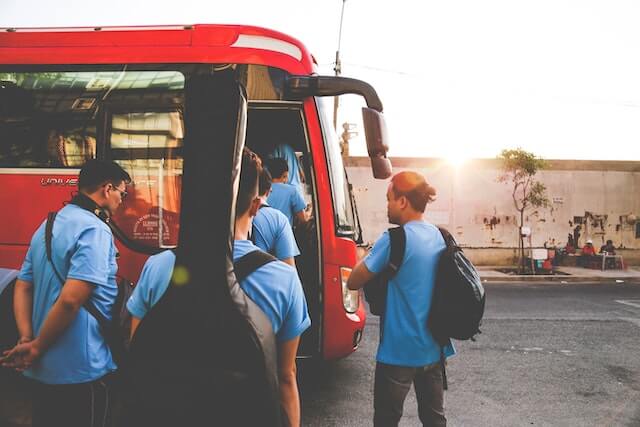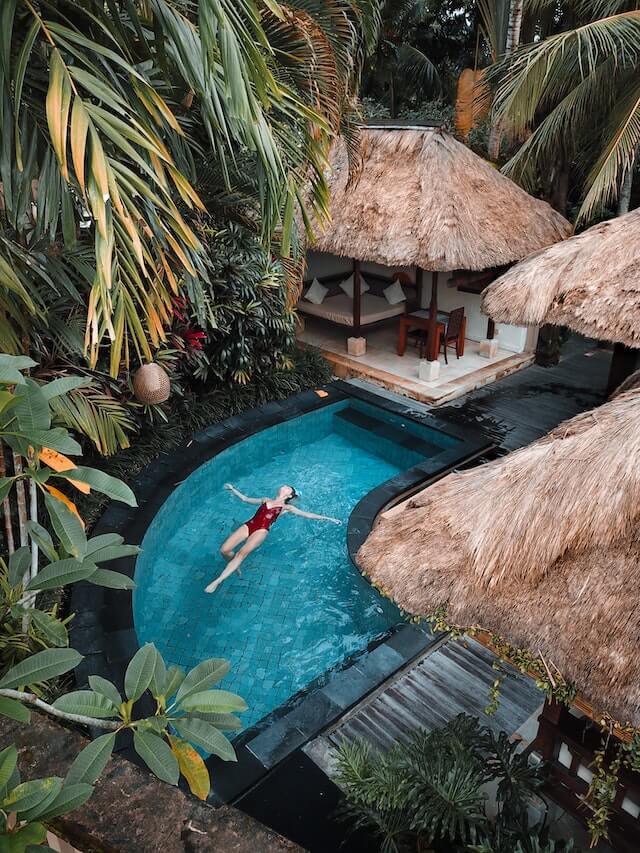
Seoul 3 Days: Vegetarian Restaurants, Guided Tours, and Hidden Gems
Seoul, the vibrant capital of South Korea, is a city that seamlessly blends tradition and modernity. From its ancient palaces and traditional markets to its futuristic skyscrapers and trendy neighborhoods, Seoul offers a unique and captivating experience for travelers. If you're a vegetarian looking to explore this dynamic city, indulge in guided tours, and discover hidden gems, then you're in for a treat. In this article, we'll provide you with a comprehensive guide to make the most of your 3-day adventure in Seoul, starting on the 12th of February.
Destination Highlights
-
Vegetarian Restaurants: Seoul has a growing vegetarian scene, with numerous restaurants offering delicious plant-based options. From traditional Korean cuisine to international flavors, you'll find a variety of choices to satisfy your taste buds.
-
Guided Tours: Explore Seoul's rich history and culture through guided tours. From palace tours to food tours, these experiences will provide you with a deeper understanding of the city and its traditions.
-
Hidden Gems: Seoul is full of hidden gems waiting to be discovered. Venture off the beaten path and explore charming neighborhoods, local markets, and lesser-known attractions to truly immerse yourself in the local culture.
Suggested Itinerary
To make the most of your 3 days in Seoul, we've prepared a suggested itinerary with activities that will allow you to experience the city's highlights while leaving room for exploration and relaxation.
| Day | Morning | Afternoon | Evening |
|---|---|---|---|
| 1 | Gyeongbokgung Palace<br>Bukchon Hanok Village<br>Namsan Tower | Insadong Cultural Street<br>Changdeokgung Palace<br>Seochon Village | Myeongdong Night Market<br>Night view of Han River |
| 2 | Jogyesa Temple<br>Cheonggyecheon Stream<br>War Memorial of Korea | Namdaemun Market<br>Seoul Museum of Art<br>Hangang Park | Hongdae Street<br>Korean BBQ Dinner<br>Nightlife in Hongdae |
| 3 | Noryangjin Fish Market<br>COEX Mall<br>Garosu-gil | Lotte World Tower Observation Deck<br>Seoul Forest<br>Itaewon | Traditional Korean Performance<br>Street Food Tasting<br>Korean Tea House |
Realistic Time Management
To ensure a smooth and efficient exploration of Seoul, here's a detailed hourly schedule per activity with estimated travel time based on location proximity:
Day 1:
- 9:00 AM: Gyeongbokgung Palace (2 hours)
- 11:30 AM: Bukchon Hanok Village (1 hour)
- 12:30 PM: Lunch at a vegetarian restaurant nearby (1 hour)
- 1:30 PM: Namsan Tower (2 hours)
- 4:00 PM: Coffee break at a nearby cafe (30 minutes)
- 4:30 PM: Explore Insadong Cultural Street (2 hours)
- 6:30 PM: Changdeokgung Palace (1 hour)
- 7:30 PM: Seochon Village (1 hour)
- 8:30 PM: Dinner at a vegetarian-friendly restaurant in the area (1 hour)
- 9:30 PM: Enjoy the vibrant atmosphere of Myeongdong Night Market (2 hours)
Day 2:
- 9:00 AM: Jogyesa Temple (1 hour)
- 10:00 AM: Cheonggyecheon Stream (1 hour)
- 11:00 AM: War Memorial of Korea (2 hours)
- 1:00 PM: Lunch at a vegetarian restaurant nearby (1 hour)
- 2:00 PM: Namdaemun Market (2 hours)
- 4:00 PM: Seoul Museum of Art (2 hours)
- 6:00 PM: Hangang Park (2 hours)
- 8:00 PM: Dinner at a vegetarian-friendly restaurant in Hongdae (1 hour)
- 9:00 PM: Experience the vibrant nightlife in Hongdae (2 hours)
Day 3:
- 9:00 AM: Noryangjin Fish Market (2 hours)
- 11:00 AM: COEX Mall (2 hours)
- 1:00 PM: Lunch at a vegetarian restaurant nearby (1 hour)
- 2:00 PM: Garosu-gil (2 hours)
- 4:00 PM: Lotte World Tower Observation Deck (2 hours)
- 6:00 PM: Seoul Forest (2 hours)
- 8:00 PM: Dinner at a vegetarian-friendly restaurant in Itaewon (1 hour)
- 9:00 PM: Enjoy a traditional Korean performance (2 hours)
- 11:00 PM: Indulge in street food tasting and visit a Korean tea house (2 hours)
Local Cuisine
Seoul is known for its diverse and flavorful cuisine. Here are some famous local foods to try during your visit:
-
Kimchi: A staple in Korean cuisine, kimchi is a fermented vegetable dish that comes in various flavors and spice levels.
-
Bibimbap: A delicious rice dish topped with an assortment of vegetables, meat (optional), and a fried egg.
-
Tteokbokki: Spicy rice cakes cooked in a savory sauce, often served with fish cakes and boiled eggs.
-
Samgyeopsal: Grilled pork belly served with lettuce wraps, garlic, and various condiments.
-
Sundubu-jjigae: A spicy tofu stew with vegetables and your choice of meat or seafood (optional).
For high-rating vegetarian restaurants, consider the following options:
-
Plant: A trendy vegetarian restaurant offering a variety of plant-based dishes with a modern twist.
-
Osegyehyang: A traditional Korean vegetarian restaurant known for its authentic flavors and cozy atmosphere.
-
The Bread Blue: A vegetarian-friendly bakery and cafe serving delicious bread, pastries, and sandwiches.
Accommodation Recommendations
Seoul offers a range of accommodation options to suit different budgets. Here are some recommendations:
Budget:
Mid-Range:
Luxury:
How To Get There And Away
Seoul is well-connected and easily accessible. Here are some transportation options:
-
Incheon International Airport: The main international gateway to Seoul. Take the Airport Railroad Express (AREX) or a taxi to reach the city center.
-
Public Transportation: Seoul has an extensive subway and bus network, making it convenient to travel within the city. Purchase a T-money card for seamless transfers between different modes of transportation.
-
Taxis: Taxis are readily available in Seoul. Make sure to have your destination written in Korean or use a translation app to communicate with the driver.
Comprehensive Packing List
To ensure a comfortable and enjoyable trip to Seoul, here's a comprehensive packing list organized by category:
-
Clothing: Depending on the season, pack appropriate clothing including layers, comfortable shoes for walking, and a light jacket or sweater.
-
Electronics: Don't forget your smartphone, charger, power adapter, and any other electronic devices you may need.
-
Travel Essentials: Bring your passport, travel insurance documents, a copy of your itinerary, and any necessary medications.
-
Korean Phrasebook: While many Koreans speak English, having a basic Korean phrasebook can be helpful for communication.
-
Miscellaneous: Pack a reusable water bottle, sunscreen, umbrella, and a portable charger for your electronic devices.
Budget Consideration
a. The standard cost of living per person per day in Seoul is approximately $70-$100, depending on your spending habits and accommodation choices.
b. Relevant costs from the suggested itinerary (excluding accommodation) may include entrance fees to attractions (e.g., palaces, museums), transportation expenses, and meals.
c. To save money, consider purchasing a T-money card for discounted fares on public transportation. Opt for street food or local eateries for budget-friendly meals, and take advantage of free attractions and walking tours.
Language and Cultural Etiquette
-
Learn a few basic Korean phrases such as "hello" (annyeonghaseyo) and "thank you" (kamsahamnida) to show respect and make interactions smoother.
-
When visiting temples or palaces, dress modestly and remove your shoes before entering certain areas.
-
Avoid pointing with your index finger, as it can be considered impolite. Instead, use an open hand or gesture with your whole hand.
-
Be mindful of personal space and avoid touching or hugging strangers, as Koreans generally value personal boundaries.
Some Off-the-Beaten-Path Experiences
-
Ihwa Mural Village: Explore this colorful neighborhood adorned with vibrant murals and street art.
-
Naksan Park: Enjoy a scenic hike and panoramic views of Seoul's skyline from this hidden gem.
-
Gwangjang Market: Dive into the bustling atmosphere of this traditional market and sample a variety of street food.
-
Bukhansan National Park: Embark on a hiking adventure and discover stunning natural landscapes just outside the city.
Frequently Asked Questions
Q: What is the best time to visit Seoul? A: The best time to visit Seoul is during spring (April to June) and autumn (September to November) when the weather is mild and pleasant.
Q: Are there any vegetarian-friendly options in traditional Korean cuisine? A: Yes, many traditional Korean dishes can be modified to be vegetarian-friendly. Look for restaurants that offer vegetarian versions of bibimbap, kimchi jjigae, and japchae.
Q: Is it safe to drink tap water in Seoul? A: Yes, tap water in Seoul is safe to drink. However, if you prefer, you can always opt for bottled water.
Conclusion
Seoul is a city that effortlessly combines tradition and modernity, offering a unique travel experience for every visitor. From exploring ancient palaces and indulging in vegetarian delights to uncovering hidden gems and immersing yourself in the local culture, Seoul has something for everyone. So pack your bags, embark on this exciting adventure, and get ready to create unforgettable memories in the heart of South Korea.
Now, let's get inspired by these videos showcasing the beauty of Seoul:



